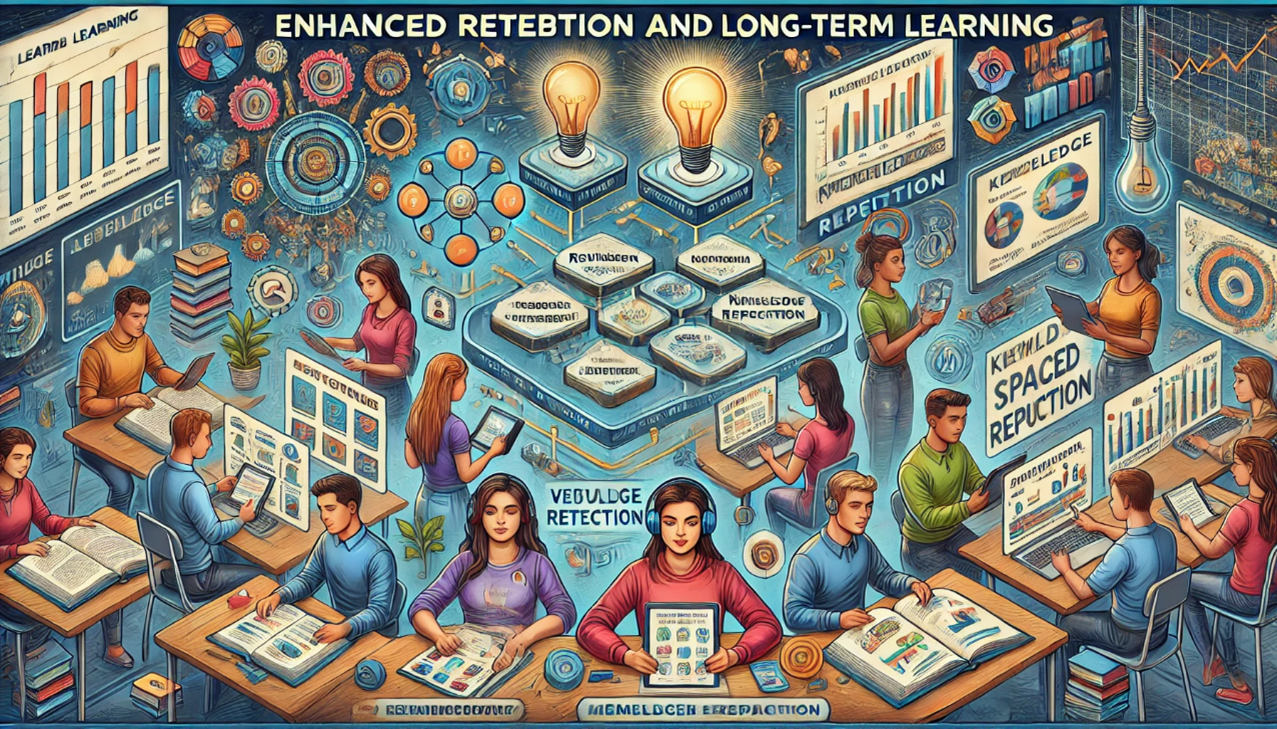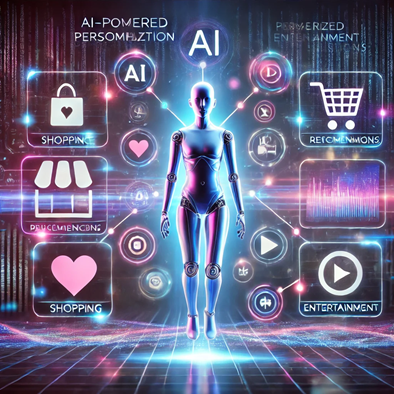How can AI improve the accuracy and usability of brain-computer interfaces?

How can AI improve the accuracy and usability of brain-computer interfaces?
by Nathaniel 11:44am Jan 25, 2025
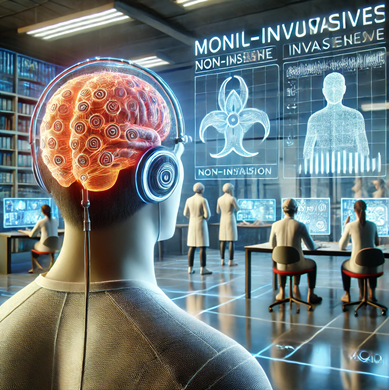
How can AI improve the accuracy and usability of brain-computer interfaces?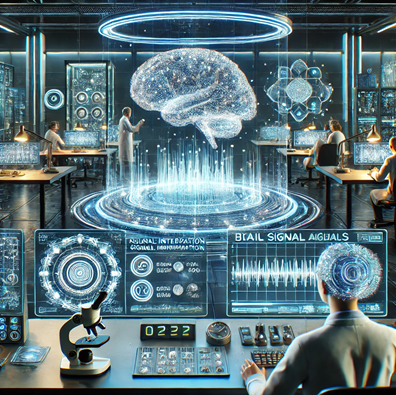
AI has the potential to significantly enhance the accuracy and usability of brain-computer interfaces (BCIs), which are technologies that allow direct communication between the brain and external devices. By improving both the precision with which BCIs interpret brain signals and the overall user experience, AI can help overcome many of the limitations that currently hinder their widespread adoption. Below are several ways AI can contribute to improving BCIs:
1. Improving Signal Interpretation and Accuracy
BCIs rely on reading brain signals, often from electroencephalography (EEG), functional magnetic resonance imaging (fMRI), or invasive techniques like implanted electrodes. AI can enhance the accuracy of signal decoding and improve the interface's overall reliability:
a) Advanced Signal Processing
Noise Reduction:Brain signals are often noisy and prone to interference from external factors (e.g., muscle movements, eye blinks). AI algorithms, especially deep learning models, can be trained to filter out noise and improve the signal quality, leading to more precise and reliable signal interpretation.
Feature Extraction:AI can be used to identify meaningful features within brain signals that are most relevant to a particular task, such as motor intention or emotional state. These algorithms can detect patterns and subtle changes in brain activity that might be overlooked by traditional methods.
b) Real-Time Processing
Faster Signal Decoding: AI can help speed up the real-time decoding of brain activity, enabling BCIs to respond more quickly to user intentions. For instance, in applications like controlling prosthetic limbs or computer cursors, reducing latency (the delay between brain signal detection and device response) is critical for a smooth user experience.
Dynamic Adjustment:AI models can continuously learn from the user's brain signals over time, adapting to their unique brain patterns and improving accuracy. This means that a BCI system could evolve as the user’s brain activity changes,adapting to new tasks or neurological conditions.
2. Personalization of BCIs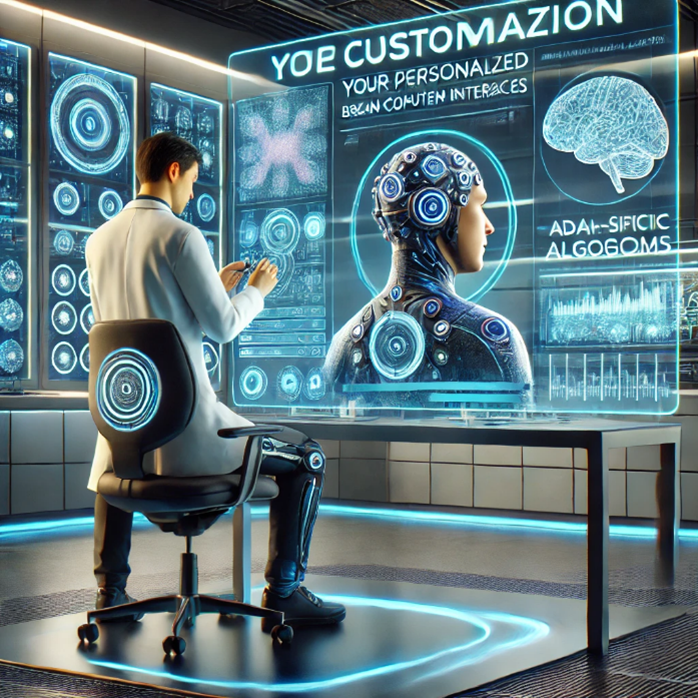
Each person’s brain activity patterns are unique, and BCI performance can vary greatly across users. AI can help tailor BCIs to the specific needs of individual users, making the system more effective and intuitive:
a) User-Specific Models
Personalized Calibration: AI can help automatically calibrate BCIs to each user’s brain activity patterns, reducing the need for extensive manual tuning. Machine learning algorithms can learn from each individual’s signals to create personalized models that can predict the user’s intent more accurately.
Continuous Adaptation: As users learn to control a BCI or as their brain activity evolves over time (due to neuroplasticity or changes in neurological health), AI systems can continuously adapt to these changes, ensuring optimal performance without requiring constant recalibration.
b) Enhanced Control Mechanisms
Intention Recognition:AI can improve the system’s ability to interpret a user’s intent. For example, deep learning models can analyze brain signals to distinguish between different types of intentions (e.g., moving a cursor vs. selecting an item) and adapt the system’s response accordingly.
Multi-modal Integration: AI can combine data from multiple sensors (e.g., EEG,eye tracking, and motion sensors) to improve control. This integration can create a more accurate and reliable representation of the user’s intent,making the BCI system more effective in complex environments.
3. Enhancing User Experience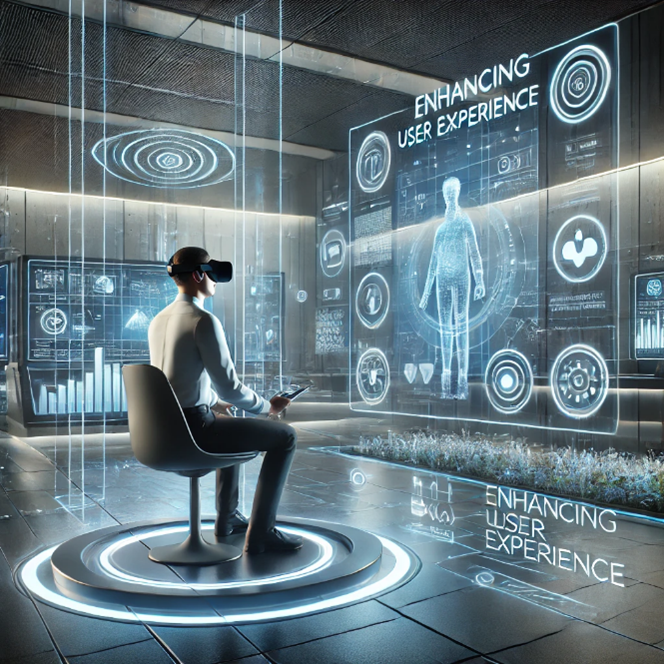
AI can play a pivotal role in making BCIs more user-friendly, intuitive, and efficient by refining the interaction between the user and the device:
a) Predictive Feedback and Support
Real-Time Feedback:AI can provide real-time feedback to users, helping them adjust their brain activity to more effectively control the system. For example, in a BCI-based prosthetic limb, AI can provide haptic or auditory feedback when a user is about to make a successful movement or when an adjustment is needed.
Assistive Guidance:For users with disabilities, AI can help predict and assist with the most likely actions the user intends to perform, making the system more responsive and reducing the mental effort required to use the BCI. This is particularly useful in assistive devices for individuals with paralysis or severe motor impairments.
b) Adaptive User Interfaces
Simplifying Interaction: AI can help create adaptive interfaces that adjust the level of complexity based on user preferences, cognitive load, and ability. For example, an AI algorithm could simplify a BCI's interface if it detects that the user is experiencing mental fatigue or stress, making it easier for them to control the system.
Context-Aware Systems:AI can use contextual data (e.g., time of day, environmental factors, or user activity) to optimize the interface for different tasks, ensuring a smoother experience in varying situations.
4. Improving Performance in Neuroprosthetics and Rehabilitation
In neuroprosthetics, such as controlling prosthetic limbs or exoskeletons, and in rehabilitation applications, AI can play an essential role in improving the system’s effectiveness:
a) Neurofeedback for Rehabilitation
Personalized Rehabilitation Plans: AI can tailor neurofeedback and rehabilitation exercises to each individual’s brain activity, optimizing recovery outcomes for patients with neurological conditions like stroke or spinal cord injuries. By providing real-time adjustments based on the user’s brain signals, AI can support more effective therapeutic interventions.
Motor Skill Learning:AI can assist in teaching users how to control neuroprosthetics by analyzing and adjusting feedback loops based on the user’s progress. Over time, AI can help users learn to move a prosthetic limb more naturally, promoting better motor control.
b) Multimodal Neuroprosthetic Control
Complex Control Systems: AI can enhance the control of complex prosthetic devices that require precise, multi-dimensional control. By processing multiple signals (e.g., brain activity, muscle signals, and movement sensors), AI can improve the synchronization between the user's intention and the device’s action, leading to more fluid and accurate movements.
Predicting Motor Intentions: For users of prosthetics or exoskeletons, AI can predict motor intentions more precisely by analyzing brain patterns. This leads to smoother and more intuitive control over prosthetic limbs or other assistive technologies.
5. Reducing Invasiveness in BCI Technology
AI can also make non-invasive BCIs more accurate and accessible, which is particularly important in making BCIs more widely usable:
a) Non-Invasive Brain Signal Decoding
Better Signal Decoding with Non-Invasive Sensors: AI can help improve the accuracy of non-invasive BCIs(e.g., EEG) by refining the decoding of brain signals without the need for implanting electrodes. With advanced machine learning algorithms, AI can more accurately interpret the limited data available from non-invasive sensors, improving the performance of these systems.
Minimizing the Need for Surgical Interventions: AI’s ability to optimize non-invasive BCI performance reduces the need for invasive procedures, lowering the risk of complications and making BCIs more accessible to a broader range of users.
6. Ethical and Privacy Considerations
AI can also help address ethical concerns related to brain data privacy and security:
Protecting Brain Data:AI can improve the security of brain data by developing more robust encryption techniques and ensuring that data used for BCI purposes is anonymized and handled securely.
Ethical Use of Brain Data: AI can help ensure that brain data is used ethically, preventing misuse in areas like mind manipulation, surveillance, or other invasive applications. Machine learning models can be developed to detect and flag unethical uses of brain data.
Conclusion
AI can significantly improve the accuracy, usability, and overall effectiveness of brain-computer interfaces by enhancing signal decoding, enabling personalization, optimizing user experience, and improving the performance of neuroprosthetics and rehabilitation tools. By leveraging AI's capabilities in real-time data processing, noise reduction, adaptation, and predictive feedback, BCIs can become more intuitive, responsive, and accessible, even for individuals with significant disabilities. However, the development and deployment of AI-driven BCIs must carefully consider ethical and privacy issues to ensure these technologies are used responsibly and for the benefit of all users.





